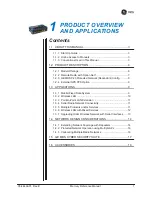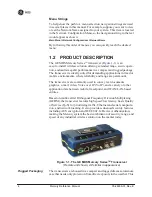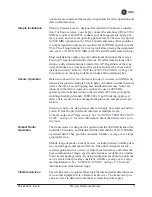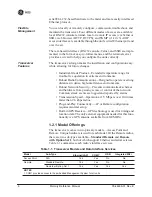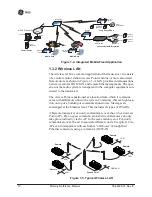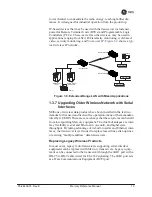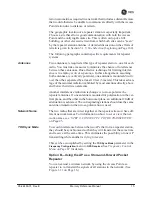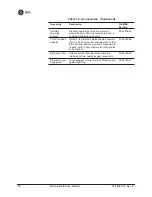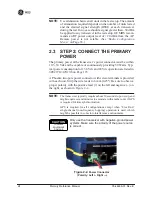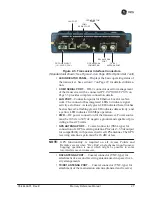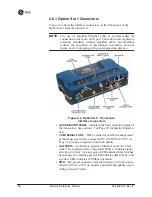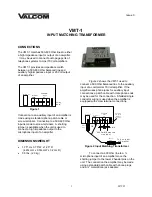
05-4446A01, Rev. E
Mercury Reference Manual
15
ration is sometimes required in a network that includes a distant Remote
that would otherwise be unable to communicate directly with the Access
Point station due to distance or terrain.
The geographic location of a repeater station is especially important.
Choose a site that allows good communication with both the Access
Point and the outlying Remote site. This is often on top of a hill,
building, or other elevated terrain from which both sites can be “seen”
by the repeater station antennas. A detailed discussion on the effects of
terrain is given in
Section 5.1.2, Site Selection (beginning on Page 164)
.
The following paragraphs contain specific requirements for repeater
systems.
Antennas
Two antennas are required at this type of repeater station—one for each
radio. You must take measures to minimize the chance of interference
between these antennas. One effective technique for limiting interfer-
ence is to employ vertical separation. In this arrangement, assuming
both antennas are vertically polarized, one antenna is mounted directly
over the other, separated by at least 10 feet (3 meters). This takes advan-
tage of the minimal radiation exhibited by most antennas directly above
and below their driven elements.
Another interference reduction technique is to cross-polarize the
repeater antennas. If one antenna is mounted for polarization in the ver-
tical plane, and the other in the horizontal plane, an additional 20 dB of
attenuation is achieved. The corresponding stations should use the same
antenna orientation when cross-polarization is used.
Network Name
The two radios that are wired together at the repeater site must have dif-
ferent network names. For information on how to set or view the net-
work names,
see “STEP 3: CONNECT PC TO THE TRANSCEIVER”
on Page 25
.
TDD Sync Mode
To avoid interference between the two APs that form a repeater station,
they should be synchronized so that they will transmit at the same time
and receive at the same time. This eliminates the possibility of one AP
transmitting while another is trying to receive.
This can be accomplished by setting the
TDD Sync Mode
parameter in the
Frequency Configuration
menu to
GPS Required
. See
Frequency Control
Menu on Page 67
for details.
Option B—Using the AP as a Store-and-Forward Packet
Repeater
You can extend a wireless network by using the Access Point as a
repeater to re-transmit the signals of all stations in the network. (See
Figure 1-11 on Page 16
.)
Summary of Contents for Mercury 3650
Page 9: ...viii Mercury Reference Manual 05 4446A01 Rev E ...
Page 11: ...2 Mercury Reference Manual 05 4446A01 Rev E ...
Page 31: ...22 Mercury Reference Manual 05 4446A01 Rev E ...
Page 155: ...146 Mercury Reference Manual 05 4446A01 Rev E ...
Page 157: ...148 Mercury Reference Manual 05 4446A01 Rev E ...
Page 171: ...162 Mercury Reference Manual 05 4446A01 Rev E ...
Page 185: ...176 Mercury Reference Manual 05 4446A01 Rev E ...
Page 201: ...192 Mercury Reference Manual 05 4446A01 Rev E ...

